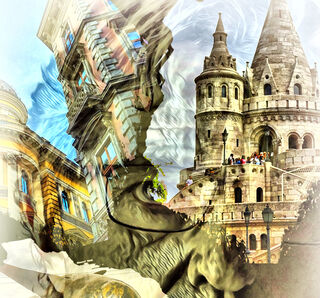
Dreaming
An Introduction to Consciousness
The first step in trying to explain the essence of experience.
Posted October 3, 2020 Reviewed by Lybi Ma
As you read this, it is likely you are conscious. After all, you are seeing words and are aware of their meanings. You may also be aware of your phone or computer screen and some of the things happening around you. Meanwhile, as you are conscious of some things, you are not conscious of others. Until right now, you probably weren’t paying attention to the feeling of your clothes on your body, and you certainly aren’t directly aware of the firing of neurons in your brain.
This blog introduces one of the mind’s most impressive and baffling creations: consciousness. In fact, the definition of consciousness is so elusive that there is no generally accepted definition. Here are a few proposals.
- The perception of what passes in a man’s own mind (Locke, 1690
- [The] subjective inner life of the mind (Chalmers, 1995)
- What experience feels like from the inside (Chalmers, 1995)
- Your private experience (Blakemore, 2010)
- The ability to be aware of being aware (Smallberg, 2015)
- All of our states of feeling or sentience or awareness (Searle, 2013)
The definition we will adopt is a commonsense definition accepted by many researchers. We define consciousness as what your own personal experience feels like from the inside; or, put another way, consciousness is the subjective inner life of the mind. Thus, returning to the example that opened the chapter, how it felt to be reading the words in your book or on your computer screen would fit this “personal” definition of consciousness, which, because it refers to what you are experiencing, is called the first- person approach to consciousness.

The experiences or feelings associated with the first-person approach are called qualia (singular: quale) where qualia are the raw essence of an experience. Thus, when you look at a red tomato, the redness you experience is a red quale. Someone else looking at the same tomato would experience their own red quale. Are your qualia and the other person’s the same? We will consider that question in a later post.
Although looking at a tomato may take place at one point in time, consciousness has also been described as continuing through time. One way this dynamic aspect of consciousness has been described is by comparing it to a movie. “There is,” the philosopher David Chalmers says, “an amazing movie that seems to be playing out in our minds.” This movie consists of images, sounds, thoughts, and emotions. Consciousness has also been described as playing out on a stage—with particularly vivid experiences.
William James (1890), compared consciousness to a river or stream: “Consciousness, then, does not appear to itself chopped up in bits. A “river” or “stream” are the metaphors by which it is most abundantly diluted. In talking of it hereafter, let us call it the stream of thought.”
A movie, a play on a stage, a floating stream, or just “what I’m experiencing right now.” However consciousness is described, it is about having and being aware of experiences. If you are awake and aware or if you are asleep and dreaming, you are having a conscious experience. And it’s easy enough to tell because you are extremely familiar with your own experiences. After all, what could be more familiar than all the things you are experiencing in your day-to-day life? It is this familiarity that Anil Seth (2010) is referring to when he states: “Consciousness is at once the most familiar and the most mysterious aspect of existence.”
But if consciousness is so familiar, why does Seth also say that it is mysterious? He goes on to add: “Conscious experiences define our lives, but the subjective, private, and qualitative nature of these experiences seems to resist scientific inquiry.” This most familiar of all things, our consciousness, “resists scientific inquiry.” What does that mean?
Science has revealed secrets ranging from atoms to the far reaches of the universe. What can be that complicated about consciousness, which is a central feature of our experience? In the next post, we will discuss what’s behind the statement that consciousness resists scientific inquiry.
References
Blackmore, S. (2010). Consciousness, 2nd Ed. New York: Routledge.
Chalmers, D. (1995). Facing up to the problem of consciousness. Journal of Consciousness Studies, 2 (3), 200–219.
Locke, J. (1690). An essay concerning human understanding.
Searle, J. (2013). Theory of mind and Darwin’s legacy. Proceedings of the National Academy of Sciences, 110 (Suppl 2), 10343–10348.
Seth, A.K. (2010). The grand challenge of consciousness. Frontiers in Psychology, 1(5), 1–2.
Smallberg, G. (2015). No shared theory of mind. In J. Brockman (Ed.), What to think about machines that think. New York: Harper Perennial.

